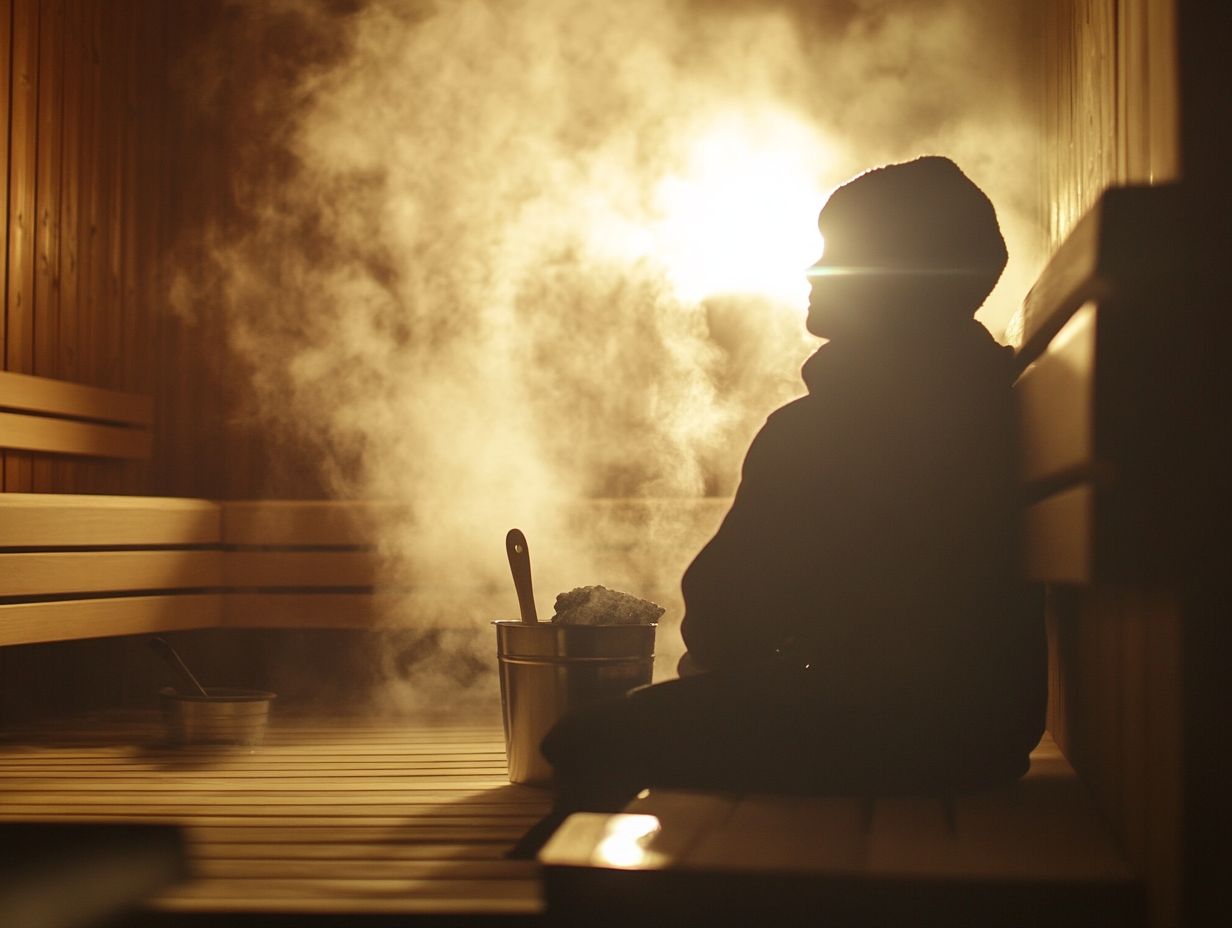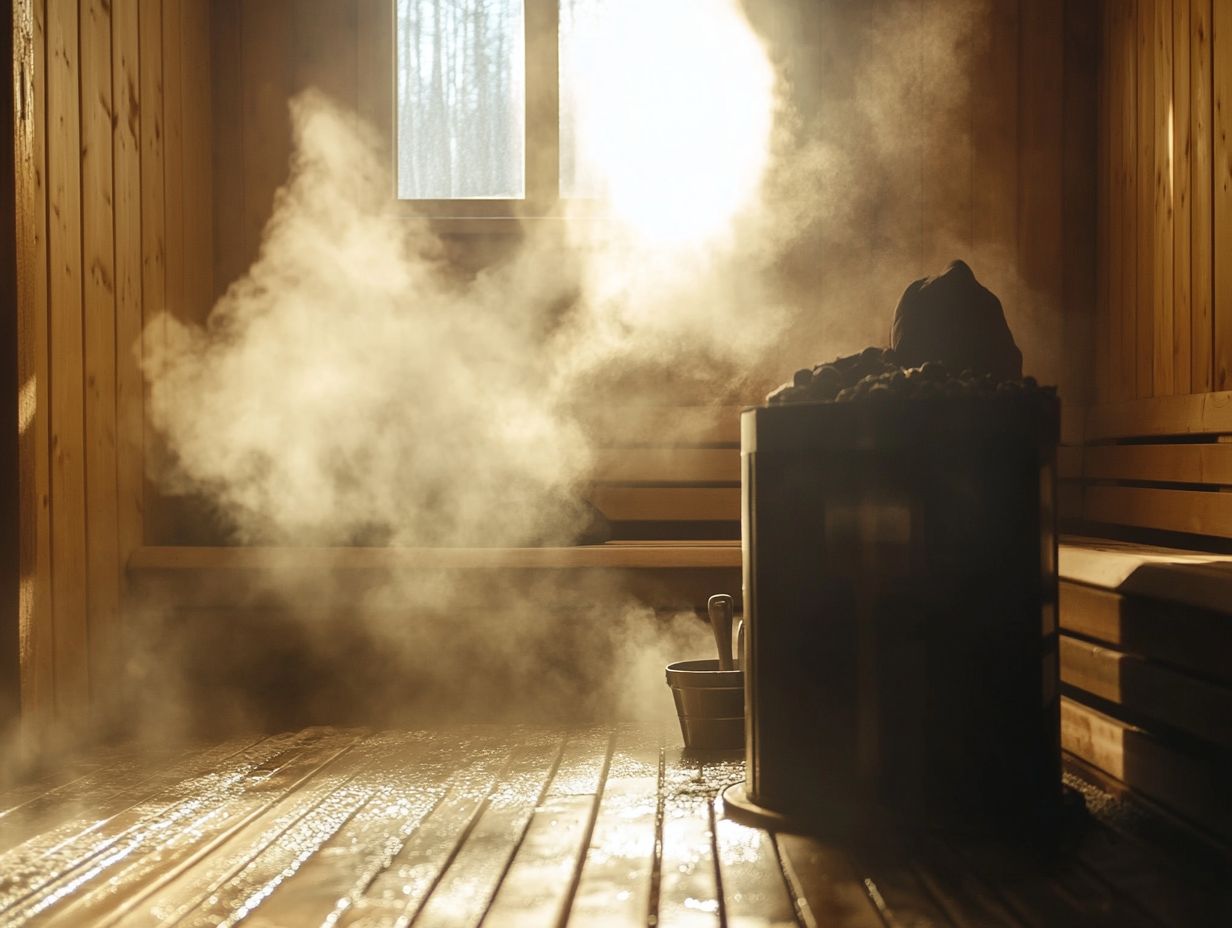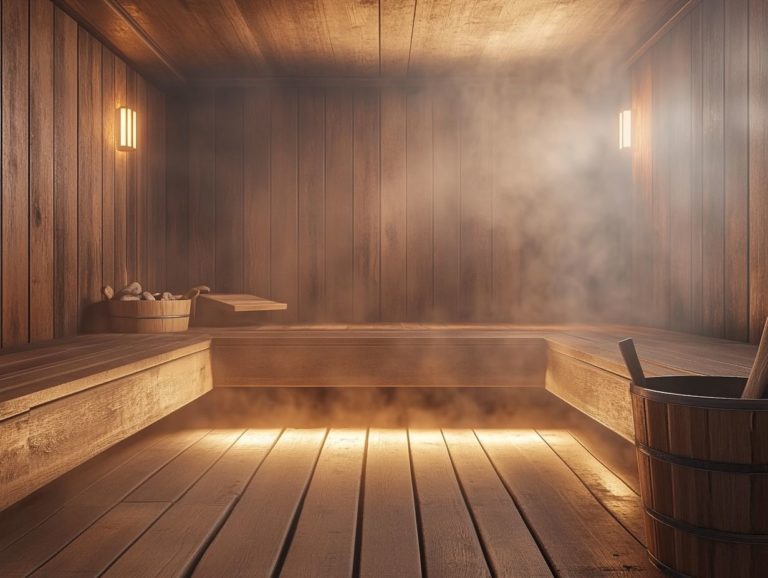Understanding Your Body�s Response in a Sauna
Saunas have been revered for their comforting warmth and potential health advantages. But have you ever wondered what actually occurs in your body during a session?
From physical transformations to detoxification processes, saunas provide a distinctive experience that can elevate your wellness routine.
This article delves into the various types of saunas, their health benefits, and critical precautions to guarantee a safe experience. Whether you re a seasoned sauna enthusiast or just dipping your toes into this ancient practice, you ll uncover ways to maximize the benefits and truly embrace the ritual.
Contents
Key Takeaways:
- Saunas can have numerous health benefits, including relaxation, improved cardiovascular function, and detoxification.
- Understanding the differences between traditional and infrared saunas can help you choose the best type for your needs.
- Incorporating sauna sessions into your wellness routine can help you maximize the benefits by following proper precautions and safety measures.

What is a Sauna?
A sauna is a specialized room crafted to envelop you in a heated environment, typically ranging from 150 F to 195 F (65 C to 90 C). Here, your body can tap into a multitude of health benefits. Originating from Nordic countries, saunas have long been a cornerstone of wellness practices, offering both traditional and infrared options.
The heat stimulates perspiration and promotes relaxation, making saunas essential for your physical and mental rejuvenation.
These heat therapies have undergone remarkable evolution over the centuries. Traditional saunas often utilize wood-burning stoves to create a dry heat, while infrared saunas harness advanced technology to emit radiant heat that is directly absorbed by your skin. This helps blood flow, aiding detoxification and improving heart health.
As you bask in the warmth, you may find a reduction in muscle tension and joint pain, facilitating recovery after exercise.
Regular sauna use boosts your mood and relieves stress, demonstrating its integral role in holistic wellness practices that emphasize the intricate relationship between heat, relaxation, and your overall health.
How Saunas Affect Your Body
Saunas profoundly influence your body by elevating body heat, heart rate, and skin temperature, all of which contribute to a multitude of health benefits. As you bask in the warmth, your body undergoes hormonal changes that improve blood circulation, accelerate metabolism, and strengthen immune function.
Embracing sauna sessions can serve as a remarkable ally in your journey toward optimal health.
Physical Changes During a Sauna Session
During a sauna session, your body s temperature rises, leading to increased sweating and a series of body changes that enhance heart function and oxygen flow.
This elevated temperature facilitates the removal of metabolic residues, contributing to improved energy production and overall health.
As the ambient heat envelops you, your cardiovascular system kicks into high gear, elevating your heart rate to pump more blood and deliver a greater supply of oxygen to your muscles and organs. This physiological response aids in detoxification through the abundant sweat you produce and boosts your metabolic rate, promoting efficient energy usage.
The relaxing warmth encourages the widening of blood vessels, further enhancing blood flow. Experience the amazing rejuvenating effects today as your body works diligently to maintain homeostasis, resulting in a holistic sense of well-being.
Start your wellness journey with a sauna today!
Health Benefits of Saunas
Saunas offer numerous health benefits. They can help with heart problems, breathing issues, and chronic pain while boosting your mental clarity and aiding weight management.
Research shows that using a sauna regularly can lower blood pressure and improve blood vessel health. Many people also report feeling less anxious and more relaxed after sauna sessions due to the release of endorphins.
The rise in heart rate during sauna bathing mimics the benefits of moderate exercise, supporting your weight management goals. These advantages enhance your overall well-being and strengthen your mental resilience.
Types of Saunas

Explore a variety of saunas waiting for you! Each one is designed to meet your unique preferences and wellness goals.
Traditional saunas use heated rocks or stoves to create an invigorating warmth. Infrared saunas, on the other hand, use infrared light to warm your body directly, providing a different experience.
Whether you want relaxation, detoxification, or just a peaceful moment, there’s a sauna style perfect for you.
Traditional vs. Infrared Saunas
Traditional saunas and infrared saunas offer two distinct paths in sauna therapy, each with its own health benefits and experiences. Traditional saunas generate heat through heated rocks and circulating air, while infrared saunas use light that penetrates deeper into the body, promoting sweating and toxin removal at lower temperatures.
This difference in heat generation changes how you experience the therapeutic effects. If you enjoy the higher humidity and intense heat of traditional saunas, it may be particularly beneficial for your respiratory health. Alternatively, if you’re seeking pain relief or skin rejuvenation, the milder temperatures of infrared saunas might be more appealing.
Additionally, innovative infrared technology can enhance circulation and support muscle recovery, making it a preferred choice for athletes. Ultimately, your decision between these sauna types should reflect your personal preferences, health objectives, and comfort level with heat intensity.
Precautions for Using a Sauna
While saunas provide a wealth of health benefits, you must follow safety measures to fully enjoy relaxation and minimize the risk of heat stress.
Staying properly hydrated before and after your sauna sessions is crucial, as it enhances your body s ability to handle heat and improves your overall sauna experience.
Safety Measures and Tips
Implementing safety measures during your sauna sessions is essential for a positive experience. Stay well-hydrated and limit your time in the heat to prevent overheating. By following these practices, you ll not only reduce stress but also enhance your body s recovery, amplifying the myriad health benefits of sauna use.
To protect your well-being, drink plenty of water before, during, and after each session. Hydration helps regulate your body temperature and prevents dehydration, which can cause dizziness or fainting a scenario you definitely want to avoid!
If you’re just starting out, begin with short sessions around 5 to 10 minutes gradually increasing the duration as your body adjusts to the heat. Always listen to your body; if you start feeling lightheaded or uncomfortable, exiting the sauna immediately is the smart move.
By keeping these precautions in mind, you can create a more enjoyable and beneficial sauna experience that leaves you feeling rejuvenated.
Using a Sauna for Detoxification
Saunas can play a pivotal role in your detox journey by removing metabolic residues through sweating. This process enhances your immune response and boosts your overall health.
Using saunas for detox is an effective way to boost your health.
How Saunas Help with Detoxification

Saunas stimulate sweating, effectively helping you eliminate toxins from your body. This process supports recovery and boosts immune function, leading to numerous health benefits.
As your body heats up, it enters a state of hyperhidrosis (a medical term for excessive sweating), where perspiration expels harmful substances like heavy metals, alcohol, and environmental pollutants.
This cleansing process also promotes improved blood circulation, delivering essential nutrients to your muscles and tissues, which can significantly accelerate recovery after exercise.
The warmth of the sauna increases white blood cell production, strengthening your immune defenses against infections. Regular sauna sessions contribute to healthier skin, foster relaxation, and reduce stress levels, enhancing your overall well-being.
Incorporating Saunas into Your Wellness Routine
Adding saunas to your wellness routine can really transform your health. Regular sauna use aids in weight management and promotes relaxation, offering a holistic approach to well-being.
This experience can lead to profound benefits such as improved blood circulation and enhanced metabolism that resonate throughout your daily life.
Tips for Maximizing Benefits
To truly reap the rewards of sauna sessions, prioritize hydration, establish regular routines, and create a calming environment for relaxation and stress reduction.
Staying well-hydrated before and after each session is crucial, as high temperatures can lead to considerable fluid loss. Consistency is key; commit to a routine whether a few times a week or daily to maximize benefits.
Enhance the sauna’s ambience with dim lighting, soothing music, and essential oils for an atmosphere of tranquility. Balancing these elements elevates both the physical and mental health advantages of regular sauna use.
Embrace this holistic approach, and transform your sauna experience into a sanctuary for both body and mind.
Frequently Asked Questions
What are the benefits of using a sauna?
Using a sauna can improve blood circulation, relieve muscle tension, detoxify the body, and promote relaxation.
How does the body respond to heat in a sauna?

When exposed to heat in a sauna, the body’s core temperature rises, causing blood vessels to dilate and sweat glands to activate to regulate body temperature.
Can using a sauna help with weight loss?
Using a sauna may cause temporary weight loss due to sweating, but it’s not an effective long-term solution. However, regular sauna use can improve metabolism and aid in weight management.
Is it safe to use a sauna if I have a medical condition?
If you have a medical condition, consult your doctor before using a sauna. People with conditions such as heart disease, high blood pressure, or pregnancy should exercise caution.
Explore more about sauna benefits and start your journey today!
How long should I stay in a sauna?
Most people should stay in a sauna for about 10 to 20 minutes.
Always listen to your body and leave if you start feeling dizzy or uncomfortable.
Are there any risks associated with using a sauna?
Saunas can be great, but they come with some risks if you re not careful.
You might get too hot, experience a lack of water, or even irritate your skin.
So, make sure to drink lots of water and follow safety tips.






